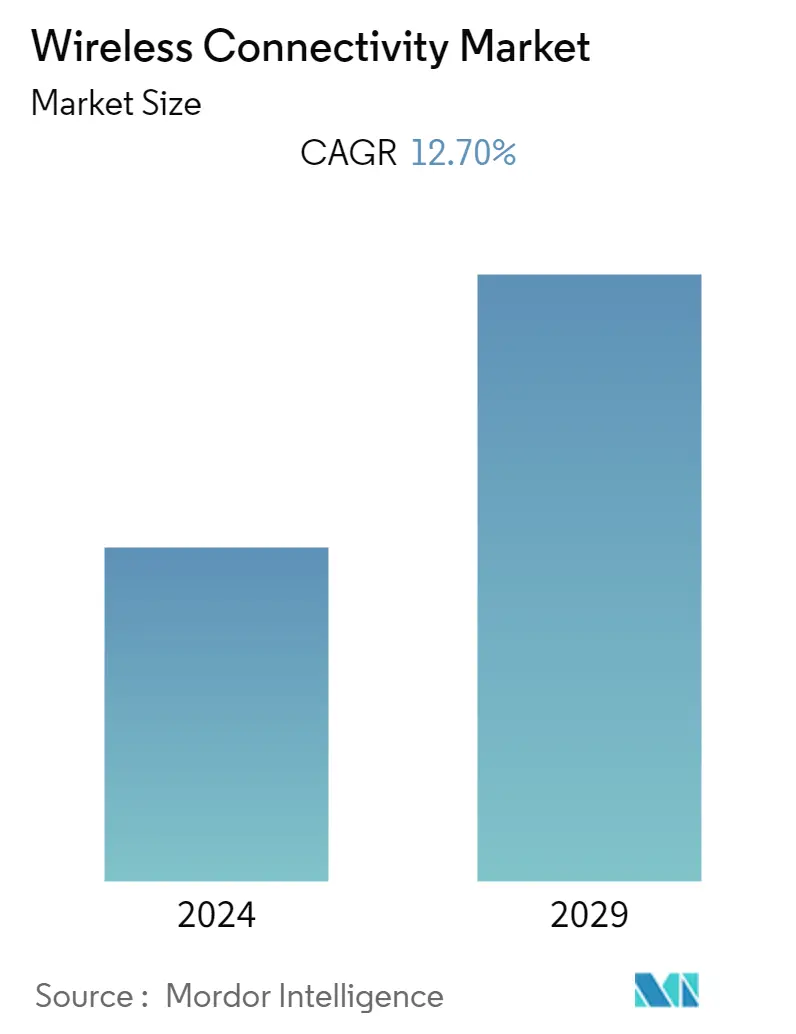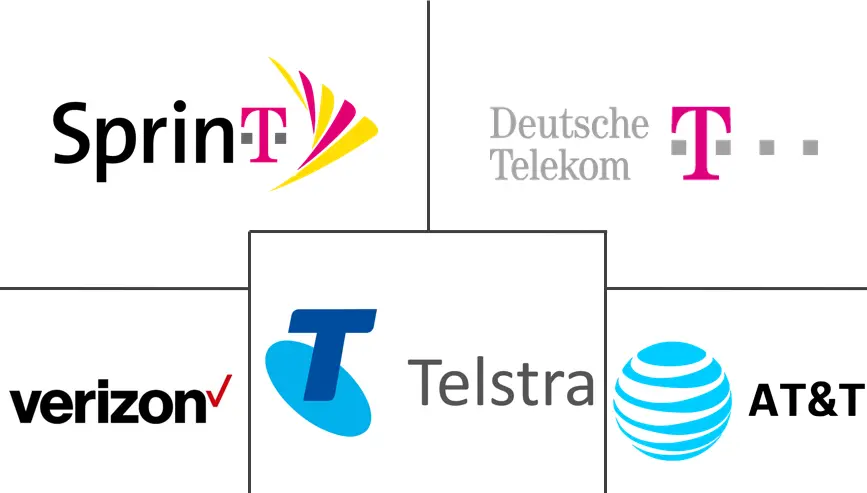Market Size of Wireless Connectivity Industry

| Study Period | 2019 - 2029 |
| Base Year For Estimation | 2023 |
| CAGR | 12.70 % |
| Fastest Growing Market | Asia-Pacific |
| Largest Market | North America |
| Market Concentration | High |
Major Players
*Disclaimer: Major Players sorted in no particular order |
Need a report that reflects how COVID-19 has impacted this market and its growth?
Wireless Connectivity Market Analysis
The wireless connectivity market is expected to register a CAGR of 12.7% during the forecast period. The proliferation of the market is to be driven by the growing demand for consumer electronic devices. Further, the adoption of advanced technologies like AI, IoT, AR, and VR is also expected to remain high in many end-user industry verticals. The creation of smart infrastructure worldwide is also a significant factor driving the demand for wireless sensor networks.
- End-user industries like the oil and gas industry extensively use reliable, secure, and resilient networks to offer seamless communications for day-to-day operations. With its service-oriented virtual private network (VPN), Multiprotocol Label Switching (MPLS) has been meeting many of these industry needs by bringing together many applications.
- Working from home has become a megatrend these days. The speed of the shift to large-scale remote work has resulted in the use of personal devices, including mobile phones, laptops, tablets, desktops, etc. Employees are also observed using personal Wi-Fi internet connections to access the corporate network.
- The increasing use of data analytics in critical industries, like healthcare, is expected to further drive wireless connectivity for further real-time information gathering. According to Philips, 92 percent of the healthcare organizations in Singapore adopted predictive analytics, followed by China, with 79 percent, Brazil, and the United States, with a 66 percent adoption rate in the last year.
- The development of smart infrastructure is expected to act as a significant driver for the market. Moreover, intelligence and connectivity enable the digital transformation of critical energy, water, and city services. For instance, in June last year, Siemens Smart Infrastructure launched Building X, a new smart building suite that is open, interoperable, and completely cloud-based. The suite is the first next-generation solution built on the design principles of Siemens Xcelerator, an open digital business platform made to drive digital transformation and value creation in transportation, grids, and buildings.
- Since COVID-19 became a catalyst for work-from-home, the demand for high-performance Wi-Fi increased. Various consumers upgraded their home Wi-Fi in 2021 and purchased additional Wi-Fi devices last year due to Wi-Fi 6's simplified wireless transmissions and enhanced uploads. Wireless networks are gearing up to connect large numbers of devices in one location without a loss in performance, giving rise to Wi-Fi 7. Such consistent growth in wireless connectivity is expected to boost market growth.
